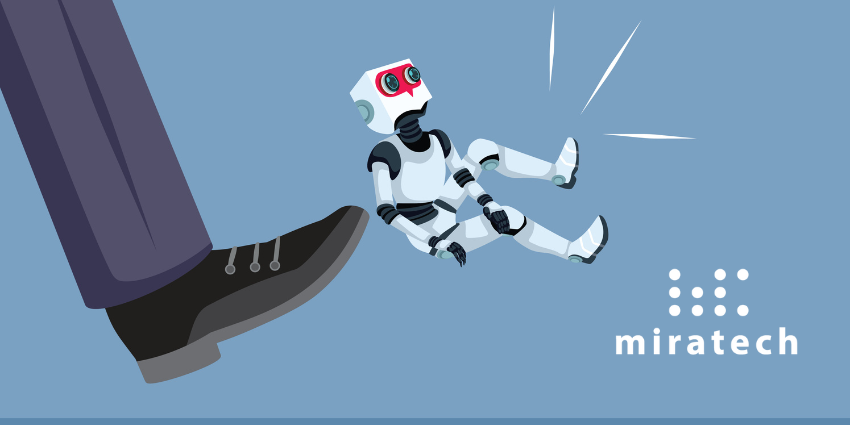Convergence is the new normal. In customer experience, AI isn’t just about choice anymore, it’s about who builds the system underneath. This is the era of AI adoption and SaaS consolidation, where once-fragmented technology stacks are merging into unified powerhouses.
NiCE’s $955 million acquisition of Cognigy is turning Enlighten Autopilot into a unified orchestration engine for AI-driven customer journeys. Salesforce’s takeover of Bluebirds accelerates the “agentification” of enterprise apps, bringing low-code orchestration into the CRM core.
Thoma Bravo’s bid for Verint – a $2B+ portfolio expansion into WEM, voice-of-customer, and AI analytics- is another consolidation signal.
This is more than just M&A headline fodder; it’s reshaping what “AI consolidated” means to enterprise buyers and how they hold choice, pricing, and integration risk in the same tight grasp.
In the broader SaaS universe, this trend is already underway. A recent survey reports that 52% of SaaS companies now integrate AI, and by the end of 2025, 95% of organizations will use AI-powered SaaS solutions, yet, contradictorily, the number of apps per organization has actually shrunk by 18% between 2022–2024.
The Benefits of AI Consolidated with CX
For all the concern about tighter stacks and reduced vendor choice, AI adoption and SaaS consolidation bring clear benefits that can’t be ignored. Buyers are seeing more cohesive platforms, faster time to value, and fewer integration headaches.
Unified stacks, fewer silos
One of the clearest benefits of AI consolidated platforms is a reduction in complexity. Building an intelligent contact center meant buying orchestration from one vendor, analytics from another, and automation from a third. Then enterprises would pay systems integrators to stitch it all together. Every new layer introduced more risk, more time, and more cost.
Now, deals like NICE’s acquisition of Cognigy change the equation. By embedding Cognigy’s orchestration capabilities directly into Enlighten Autopilot, NICE can offer an end-to-end solution where customer intent detection, conversation design, and resolution tracking are all managed in the same stack. For buyers, that means fewer moving parts and less reliance on fragile connectors or middleware. Salesforce’s Bluebirds acquisition points in the same direction, baking low-code orchestration straight into CRM workflows.
When data, automation, and orchestration live in one place, outcomes become easier to measure, and upgrades roll out faster across the entire platform.
Improved AI maturity and adoption
Most organizations are still immature in their AI usage. McKinsey research finds that only around 1% think they’ve reached AI maturity, meaning they can deploy AI at scale with governance and accountability.
Consolidated platforms can close that gap by providing a packaged approach where compliance, observability, and orchestration are part of the core product. That matters because AI adoption has historically stalled when governance frameworks lag behind deployment goals.
With AI adoption and SaaS consolidation, CX leaders get predictable guardrails: dashboards for monitoring, pre-built integrations for data governance, and policy frameworks aligned to regulations like the EU AI Act.
For buyers under pressure from boards to accelerate rollout, this kind of ready-made governance can make the difference between a controlled expansion and an uncontrolled experiment.
Potential for Lower TCO (Total Cost of Ownership)
Running several vendors side by side is rarely efficient. Each one comes with its own license fees, connectors, and support contracts. In many projects, integration alone can eat up 25-35% of the total cost of AI, often costing more than the software itself. A consolidated platform trims that overhead by rolling functions into one package and cutting down on duplication.
Vendors are also experimenting with new pricing models. NICE, Genesys, and others are shifting from per-seat models toward usage- or outcome-based pricing, where companies only pay when an issue is successfully resolved. This approach mirrors trends in automation, where providers like Ada promote “resolution-based” economics. For CFOs, the promise is a clearer ROI story: predictable costs, lower integration fees, and pricing that aligns with actual business outcomes.
Scale and innovation at speed
Consolidated AI platforms can also drive scale. Big vendors often have larger research budgets, wider datasets to train on, and shorter development cycles. For buyers looking to move AI from pilot projects into live production, that muscle makes a difference.
The NICE–Cognigy deal shows how this plays out. Cognigy’s orchestration tools already had traction with global enterprises. Folded into NICE’s Enlighten AI, they become part of a wider platform that blends automation with analytics. That scale gives big vendors an edge in areas such as observability, compliance, and vertical add-ons.
A hospital can benefit from pre-built frameworks that support regulation, while a retailer might get plug-and-play modules for returns or warranty claims. In practice, these unified stacks act like AI factories, shipping features at a pace smaller vendors would struggle to match.
The Challenges of AI Consolidation
Consolidation makes life easier in some ways, but it also creates new problems that enterprise buyers can’t ignore. The same moves that simplify stacks can limit choice, raise costs, and expose organizations to bigger risks.
Fewer options, greater lock-in
Consolidation narrows the field. Vendors like NICE, Salesforce, and Microsoft are pulling automation, orchestration, and analytics into the same platforms. Once a company’s data and processes are tied in, breaking free is costly and disruptive. Smaller vendors, like Rasa, Kore.ai, and others, may still offer strong products, but it gets harder to justify the integration effort when the big players are bundling everything by default.
The pricing squeeze
At first, unified stacks often look cheaper. One bill, one vendor, fewer integration costs. But consolidation shifts leverage to suppliers, not customers. Once locked in, enterprises are at the mercy of new bundles, higher license tiers, and usage-based pricing that can quickly outpace forecasts. Some vendors are moving toward “resolution-based” pricing, where costs depend on outcomes, not licenses. That sounds attractive, but it shifts financial risk onto the buyer if volumes or recontacts rise.
Customization takes a hit
Broad platforms often miss the mark for niche requirements. Sectors such as healthcare, finance, or government run on strict workflows and heavy regulation. Generic, one-size-fits-all automation can erode those differences. CX leaders are already calling out the risks of “off-the-shelf” AI that scales well but fails under the weight of sector-specific complexity.
Innovation slows at the edges
While consolidation can accelerate mainstream development, it often leaves less room for experimentation. Cavell analysts have argued that NICE’s move for Cognigy will strengthen its position but could also reduce variety in the CX technology ecosystem. Smaller players are usually the ones pushing boundaries, and acquisitions often fold them into slower, corporate release cycles.
Higher stakes when things break
When fewer companies carry more of the stack, the stakes rise. The 2024 CrowdStrike outage is a clear reminder: a single error grounded flights, froze banks, and halted hospitals worldwide. AI adoption and SaaS consolidation can create similar vulnerabilities. If a major vendor’s automation platform goes down, the impact could ripple through entire industries overnight.
Preparing for the AI Consolidation Era
Consolidated AI is a growing trend, and CX leaders don’t have the luxury of waiting it out. The smart move now is to prepare, both technically and culturally, for a market where fewer vendors control more of the stack:
- Rethink vendor strategy: Some enterprises will commit fully to one ecosystem, while others keep their options open. A blended model is gaining traction, keep the core on a major platform, but leave space to connect smaller, specialist tools. It’s less tidy than going all-in, but it reduces dependence.
- Fix the data problem: Consolidation doesn’t fix poor data hygiene. Fragmented or inconsistent records still derail AI. Companies that invest in reliable pipelines now will see stronger performance regardless of the stack.
- Ask for transparency: Fewer suppliers mean more vendor power. Buyers should ask for straightforward pricing, clear product roadmaps, and monitoring tools that show how the AI is performing.
- Prepare the workforce: Automation changes roles more than it cuts them. Cavell expects contact center roles to rise over the next three years, though the focus will shift. Agents will handle complex or emotional tasks while AI takes the routine. Training and reskilling should be part of the plan.
- Keep regulators in mind: Rules are tightening. The EU AI Act and ISO 42001 set high standards for auditability and control. Gartner expects most enterprise AI systems to face audits by 2026. Big vendors may bundle compliance frameworks into their platforms, but that doesn’t let enterprises off the hook. Independent checks are still essential.
What’s Next in AI Consolidation
More deals are coming. Analysts expect another wave of mergers as SaaS and CX vendors try to scale AI faster. Data providers, orchestration platforms, and automation specialists are the most likely targets.
Genesys is already leaning into orchestration. Microsoft is expanding its intent-based agent frameworks. Google is pushing Gemini deeper into contact center workflows. Each move shows the same pattern: vendors want to own the entire experience, not just a piece of it.
Another shift is the rise of AI factories – studios where enterprises can design, test, and deploy their own agents at scale. NICE, Genesys, and Five9 have all released versions of this. These tools speed up development, but they also pull buyers further into a single vendor’s ecosystem.
AI is now built into almost every CX system. The critical question is who runs it and how it’s delivered. In an era of AI consolidated stacks, the firms that succeed will be the ones that prepare early and keep flexibility in reserve.







